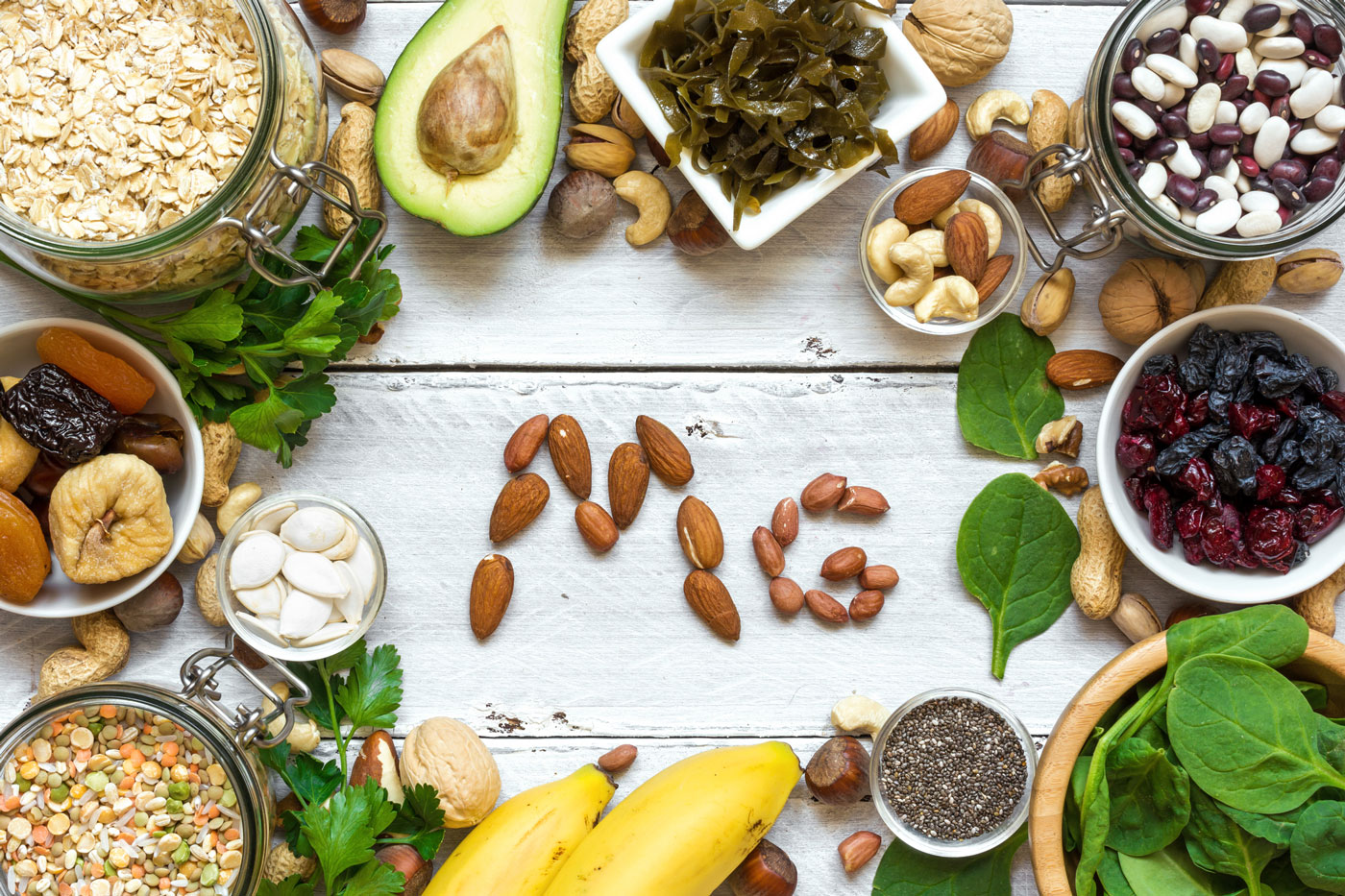
Often get muscle cramps or a twitchy eye?
Do you suffer with lots of migraines?
Or always crave chocolate?
You may be deficient in magnesium.
Magnesium is an essential mineral needed for over 300 chemical reactions in the body, including regulating your blood sugar levels and pumping your heart. It’s also a vital co-factor nutrient for other minerals (helping them to do their job) including chromium and calcium. Without magnesium, these other minerals do not work efficiently. So, what are the benefits of taking magnesium? In this article, we’ll be discussing what magnesium is good for and the signs you may be lacking in this vital mineral. Learn which foods contain magnesium and how much you should take each day.
What are the symptoms of Magnesium deficiency?
- Tiredness
- Twitching eyes, muscle spasms, restless feet and leg cramps (including at night)
- Sugar or chocolate cravings (cacao beans are high in magnesium)
- Constipation
- Pre-Menstrual Tension (PMT) and spasmodic period pain
- Pre-Menstrual Tension (PMT) and spasmodic period pain
- Recurring headaches or migraines
- Depression or low mood
- Feeling edgy, tense or anxious
- Sleep issues especially falling asleep
Think you may be deficient in magnesium?
Magnesium is needed for a multitude of body functions, from making cellular energy and transmitting nerve impulses to keeping your immune system healthy.
Here are the main benefits of taking magnesium:
- Improves your energy levels. Magnesium, along with B vitamins and CoQ10, fires up your cells so they can produce energy.
- Reduces stress and lifts your mood. Low magnesium levels are linked to low serotonin levels. This is the feel-good hormone which makes you relaxed and happy.
- Relaxes your muscles and stops cramping by counteracting the contracting effects of calcium. Both minerals work together to contract and relax the muscles in your body, including your heart.
- Prevents sugar cravings and diabetes by balancing your blood sugar levels and improving insulin sensitivity. Magnesium is needed to get sugar into your cells quickly so your body can do what it needs to do.
- Makes your bones strong and healthy. Magnesium activates calcium and Vitamin D, collectively working with these nutrients to grow and repair bones.
- Alkalises your body and maintains PH levels so you don’t get too acidic.
- Helps you sleep and feel less anxious by producing a neurotransmitter called GABA which helps you switch off by calming your mind and relaxing your body.
- To stay hydrated. Along with sodium, potassium and calcium, magnesium is an important electrolyte needed for water balance in the body.
- Prevents migraines. Those who suffer with migraines tend to have low intracellular magnesium levels. When magnesium levels are low, arteries to the brain contract and chemicals are released into the blood, causing a sensitivity to pain.
What prevents Magnesium absorption?
- Lifestyle habits such as drinking coffee and alcohol, smoking and eating junk food rob your body of essential nutrients, especially magnesium.
- Eating calcium-rich foods at the same time as magnesium-rich foods will limit the amount of magnesium your body absorbs. Both of these minerals compete against each other. It’s best to eat these foods separately, two hours either side of each other.
- Vitamin D deficiency as vitamin D is a co-factor nutrient and is needed for the intestinal absorption of magnesium. If your vitamin D levels are low then your ability to absorb magnesium will be reduced.
- Cooking vegetables can result in mineral loss especially when boiled, fried or heated at a high temperature.

What foods contain Magnesium?
Magnesium is found naturally in many foods. However, due to food processing techniques and mineral-depleted soils, some foods are devoid of magnesium (and other important minerals) by the time they reach our plates. This is why it’s essential you eat foods in their natural state and buy organic where possible.
Here’s a list of magnesium-rich foods:
- Leafy green vegetables (spinach, broccoli, kale, chard, green peas)
- Bananas and raspberries
- Avocado
- Figs
- Almonds, cashews and peanuts
- Chickpeas, lentils and beans (kidney beans, black beans)
- Quinoa and wholegrains (buckwheat, millet, bran, brown rice)
- Chia seeds, pumpkins seeds and sunflower seeds
- Mackerel and salmon
How much Magnesium should you take?
The Recommended Daily Allowance (RDA) varies per person, dependent on sex, age and special requirements such as in pregnancy or chronic conditions.
- A guideline is as follows:
- Men (aged 19+): 400 – 420mg per day
- Women (aged 19+): 320 – 360mg per day
- Children (aged 1 – 18 years): 85 – 300mg per day, dependent on age
- Pregnant/ breastfeeding women: 350 – 400mg per day
The best form of magnesium to take is magnesium citrate as it’s highly bioavailable, meaning it can absorb into the cells easily. Avoid magnesium oxide as it is poorly absorbed (yet frequently used in many cheap supplements). Before supplementing with any mineral, we suggest consulting with a qualified nutritionist or naturopath so they can advise you on the correct dose. Doses can vary, dependent on the individual’s needs.
Boost your mood, energy
and sleep
Magnesium is an essential mineral your body needs to function efficiently. As our bodies use so much magnesium, it’s important to include magnesium-rich foods in your diet to prevent fatigue, headaches and insomnia. Avoid long-term health issues such as diabetes, chronic fatigue syndrome and high blood pressure by adopting a healthy, balanced diet and supplementing with magnesium if required.


